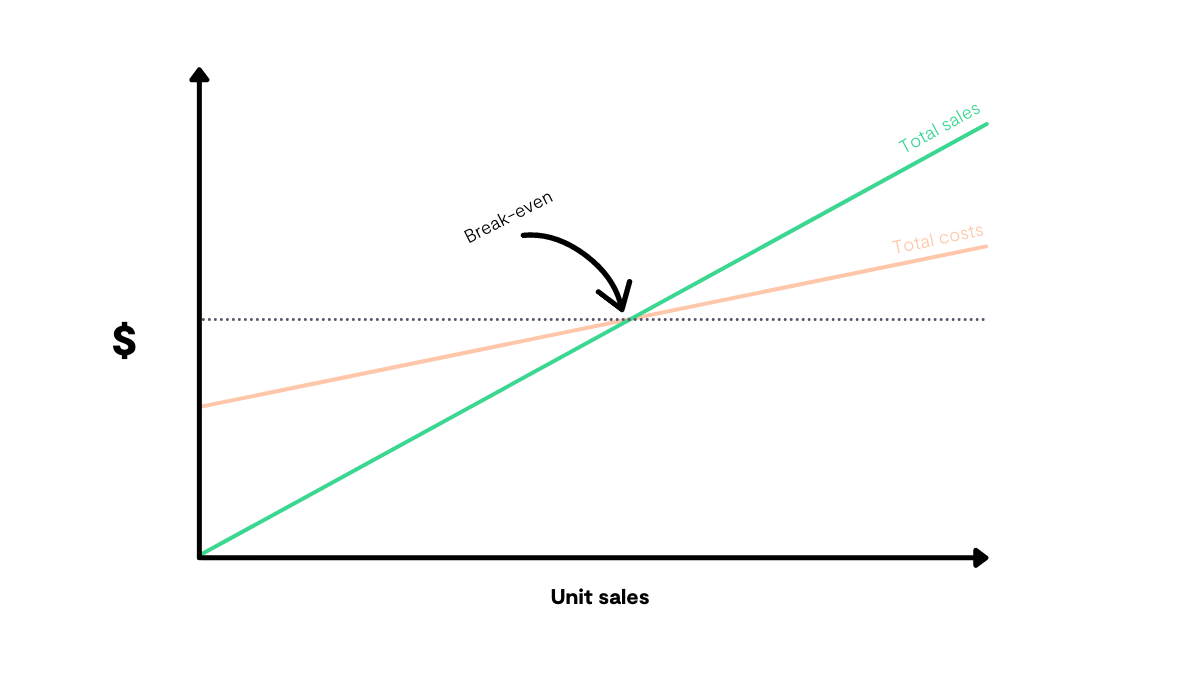Starting a new company is always exciting, but before taking your business idea to life, you have to dedicate time to planning.
Writing the financial section of your business plan is one of the essential tasks on your path to becoming an entrepreneur because a business plan without numbers is just a concept, not an actual plan.
Your idea, strategy, and marketing plans are exciting topics of discussion over a pint or a glass of wine, but let’s be honest; you need numbers to justify that your business idea is viable. The following will help you navigate through this critical process.
Here are a few business ideas for your inspiration.
What is a financial plan, and why do you need it?
A financial plan is a section of a business plan that explains in numbers how your company is going to make money and what it costs to do so. A well-prepared financial plan is a foundation for every healthy and prosperous business.
The purpose of a financial plan is to shed light on your projected income and expenses. You’re going to need a financial plan in many turns, for example, if you are looking to get investors on board or plan to obtain a bank loan. But even if you were not looking for external financing, you should do it for your own good.
A financial plan works as the basis for your budget, strategy, and goals, guiding you to make better decisions and steer your business in the right direction.
Basic financial glossary for a starting entrepreneur
Before jumping into the art of financial planning, let’s go through some basic glossary terms related to business finances.
Revenue
Revenue is your company’s total sales minus any added fees, like VAT or sales taxes. Revenue does not tell whether your business is profitable or not, only the amount of money coming into your business.
Gross profit
Gross profit is your sales less the direct costs of sales. Your gross profit should cover your operating expenses, interest, and taxes.
Net profit
Net profit is your gross profit less the fixed operating expenses, salaries, other non-repeating expenses, interest, depreciation, and taxes.
Accounting
All your income and expenses are documented in your accounting books. The most important task of accounting is to keep the owners and other stakeholders of the company informed of its financial transactions and general situation.
Keep in mind that financial planning and accounting are two different things. Where a financial plan aims to forecast the future and summarizes a lot of stuff, accounting looks into the past and is more detailed.
Balance sheet
A balance sheet is a financial report that shows a company’s financial position on a specific date. The balance sheet summarizes a company’s equity, assets, and liabilities. The balance sheet is also part of the financial statement that you do after every accounting period.
Income statement
The income statement is a financial report that determines a company’s profit or loss during its fiscal year.
Financial statements
Financial statements are a collection of reports that elaborate on your company’s performance over its previous fiscal periods. The content of financial statements varies between countries because of differences in legislation but common reports included are the income statement, cash flow statement, balance sheet, and the statement of shareholders’ equity.
Financial statements and a financial plan are not the same thing. Financial statements are based on your accounting reports and are, therefore, looking into the past, whereas a financial plan tries to project the company’s future performance. An existing business can, however, base the financial planning on its’ previous financial statements.
What does a financial plan include?
As said before, a financial plan includes your company’s projected income and expenses. It consists of several different components, also known as budgets. A starting business can often have all partial budgets in one overall budget, but it’s not uncommon to compile separate budgets for a more detailed financial view.
Keep in mind that you should be realistic when you fill in the numbers in the financial section of your business plan. Overly optimistic financial projections are only harmful to you and your business.
Sales forecast
Financial planning starts by estimating your sales. A sales budget is the most important partial budget of your financial plan because it tells how much money is coming in. Based on the estimated top line, you should adjust your expenses.
Get started by setting up a spreadsheet with your monthly sales goals for the first one to three years. Then list all the products and services you are selling and assign each product a price. This will tell you how many units you need to sell to reach your sales goal.
For a traditional retail business selling products with fixed prices, calculating sales is simple. Just multiply the price of each product by the units sold, sum the sales of different products together, and voilà, you have your total sales.
Units sold * Price per unit = Total sales
A rental business can follow a similar approach with tiny adjustments. In the calculation, replace Units sold with Rental days sold. In most cases, people can rent a single rental product for different durations. Therefore, you should use the number of rental days sold instead of the number of rental orders sold, as an order can include multiple rental days.
Price per rental day is the average value your customers pay per one rental day. The price per rental day often varies depending on the duration of the rental. Thus, you will need to calculate the average based on your historical financial statements or use an estimated number.
Rental days sold * Price per rental day = Total sales
Limitations to your sales forecast
The amount of products you have in your inventory determines the highest number of units you can sell. If you’re selling apples and have ten apples in stock, that’s the potential unit sales without restocking.
The same applies to rental businesses but with a minor twist. You can sell one item in your rental inventory for 28-31 rental days in a month.
Limitations add a layer of realism to your calculations. If you’re a starting business and have limited stock, set your sales goals realistically.
Expenses budget
The expenses budget helps you understand how much it costs to run your business and sell your products and services. Typically expenses are split into fixed and variable costs.
Fixed costs
Fixed costs are the company’s operating expenses that are there even without a single sale. These costs include salaries, rent, insurances, electricity, water, property management, internet connection, software and hardware costs, and other mandatory costs that keep your business operational. Also, equity costs, such as interest rates and depreciation of fixed assets, are considered fixed costs.
Variable costs
Variable costs include the direct costs to selling your products and services and other expenses that are not repeating by nature, such as ad campaigns, for example. Therefore, these costs have a tight relationship with the sales budget, meaning that variable costs and total sales move in the same proportion to sales volume.
Variable costs generally include production and acquisition costs, sales provisions and performance-based salaries (e.g. bonuses), maintenance and storing costs, and other expenses. Variable cost structure changes a lot between business types. Identifying variable costs helps to price your products and services optimally and prepare for sales peaks.
Typical equipment rental company’s variable costs:
Acquisition costs
Assigning product acquisition costs to individual rentals requires estimation. Let’s say that buying a product costs $1000 for your business. The product is of high quality and should last the usage of at least 200 one-day rentals with proper maintenance. Therefore, you can estimate that the acquisition cost per single rental is $1000 / 200 = $5.
Maintenance costs
Almost every product requires some level of maintenance and care after every rental. It can be cleaning, inspecting, or then a thorough servicing, including replacing wearable parts. Depends on the product. Therefore, include the labor costs of your average maintenance process and the cost of spare parts to your maintenance costs.
Other costs
Does your rental process include other steps causing additional labor or material costs? Add those costs also to the variable costs.
Cash flow projection
The purpose of the cash flow projection is to forecast the company’s monthly cash flow and evaluate the health of the company’s liquidity. The cash flow statement shows the money coming in and leaving your company and tells whether you have enough cash to pay bills, loan repayments, salaries, and other expenses.
Calculate your monthly cash budget by deducting the total payments leaving the treasury from the funds entering the treasury.
Healthy liquidity is essential for any successful business. It is crucial to follow cash flow projection proactively because even a healthy company can find itself in a difficult position if the cash flow stays negative for too long. This is particularly important for seasonal rental businesses.
Marketing budget
Every business needs marketing to acquire customers and grow sales. Even the smallest companies should include a marketing plan and budget in their business plan. A good practice is distributing the budget between strategic long-term brand marketing and reactive, short-term marketing like special sales campaigns.
A marketing budget is often vaguer than other budgets. The reason is that the sums companies spend on marketing are relative to their income. Marketing budgets are highly dependent on the industry and competitive landscape, so it’s challenging to say an exact number of how much a company should spend on marketing. Sometimes it is wise to spend more, for example, if you find a marketing tactic that works well and has a high ROI. On the other hand, sometimes it’s better to save some of the budgeted costs to be used when there’s a more natural demand for your products and services.
Based on the company’s sales and marketing performance, the management should adjust the marketing budget regularly instead of setting a fixed budget for a whole year. Especially seasonal rental businesses should adjust marketing budget monthly and time the investments when the iron is hot.
Read more about digital marketing strategies
Income projection
You can form your overall budget and profit and loss statement based on the sales forecast, expense projections, and projected cash flow statement.
Total sales - Cost of sales = Gross profit
Gross profit - Other expenses - Interest - Depreciations - Taxes = Net profit
The most important task of the income statement is to tell you and your stakeholders if the business is profitable and scalable, and thus, viable in the long term. If the numbers don’t look satisfactory, it’s time to get back to the drawing board and adjust the business plan or numbers in your financial projections.
Break-even analysis
In most cases, starting a business includes front-loaded expenses. The break-even point in business is when your sales have reached the expenses and are equal, meaning that you have not made a profit yet but have paid back the initial investments that it took to get your business up and running. The break-even analysis tells how many units you must sell and how long it will take for you to reach this point based on your sales and cost estimates.
An equipment rental business can also calculate the break-even point for every individual stock-keeping unit. It means figuring how many times an individual item has to be rented out before paying back the acquisition cost. In the long term, this helps to recognize the most profitable products, models, and categories.

A few tips on how to write and use the financial plan
It is worthwhile to point out that writing the financial plan is not a linear process. It requires going back and forth between the different sections as estimates in one section affect the forecasts in another section. For example, if you notice that your initial sales forecasts don’t provide sufficient cash flow projections, you might need to go back and review and iterate your sales and expense budgets.
Furthermore, once your financial plan is ready, use and return to it regularly. Adjust the estimates and numbers monthly and analyze your current performance to the historical performance and industry benchmarks. The purpose of the financial plan is to help you on a regular basis. It’s a tool that helps you to manage your business, make better decisions, and continuously learn more about your company and the environment it operates in.









